Rob MacGregor
Special to The Globe and Mail
This article was published more than 11 years ago. Some information may no longer be current.
TPM and Wheels
Hello Rob, I have a new BMW X3 SUV with tire pressure monitors and "run flat" all-season tires on BMW wheels.
I was wondering about my winter tire options. Given the number of potholes on the roads and chances for sliding into curbs under icy winter conditions, I had always been told that alloy wheels were not recommended in the winter and that steel wheels and winter tires are recommended. I do see the value in using winter tires for the extra traction. I currently have a set of four steel wheels and Bridgestone winter tires that I used on a previous vehicle. The sizing of the wheels and tires would work on the current BMW.
However, the steel wheels do not have the TPMS and the tires are not "run flat". Does that make a difference to the vehicle? My previous vehicle (which also had TPMS) did not care and would just show a warning on the dashboard about no communication with the TPMS. However, the BMW seems to have a high level of sophistication when it comes to the TPMS. I plan to ask the local dealership this same question but suspect they may tell me I need to install TPMS and they would gladly sell me a new set of wheels and tires for $1000s.
Thoughts?
Thanks, Russell
Your question touches on what is quickly becoming one of my most popular auto maintenance topics, and I wish I had a short answer for you.
When a car owner makes any type of modification to a new vehicle, it is always best to talk to the manufacturer – and I don't mean the dealer. Send a note or an e-mail to:
BMW Canada 50 Ultimate Drive Richmond Hill, Ontario L4S 0C8 Phone: 1-800-567-2691 http://www. bmw.ca/ca/en/general/contact/contact.html
bmw.ca/ca/en/general/contact/contact.html
There are aftermarket manufacturers of TPMSs but the trick is to find one that communicates with the factory installed system. If you can't find one, you may have to resort to buying from the dealership.
You may find out that the manufacturer will support using non-TPMS wheels. The problem is they may balk at any warranty claim that could possibly be traced back to the non-TPMS wheels.
The good news is that TPMS sensors can be installed as part of the tire valve and stem assembly. The other good news is that the normal operation of the vehicle will not be affected by the absence of TPMS. As you have mentioned, you will just have to put up with the TPMS warning lamp remaining illuminated.
In your case, you may certainly drive with conventional tires instead of run-flats, but if you don't store a spare tire in the vehicle and you have a flat, you're hooped. In most cases, run-flats are installed because there simply is no place to locate a spare tire.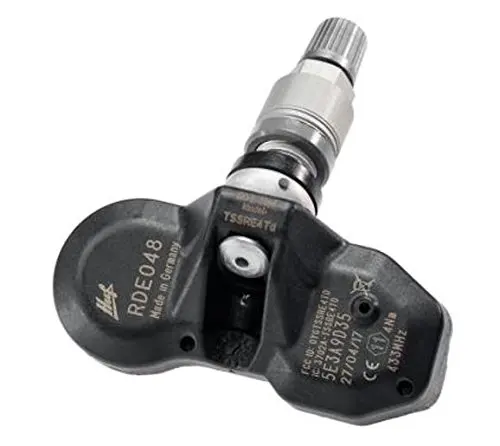 With your X3, you be challenged to find room for a spare.
With your X3, you be challenged to find room for a spare.
So Russell, the final decision becomes personal, philosophic and pragmatic. I wish I could tell you definitively which way to go, but there are many factors to consider when modifying a new vehicle, especially considering the possible effects to your warranty.
Send your auto maintenance and repair questions to [email protected]
In today’s article I’ll cover the following:
The system monitors the tire pressure and alerts the driver when to correct the tire pressure. Depending on the BMW model, the tire pressure readings are displayed in the instrument cluster (non-iDrive vehicles) or via a central information display (iDrive equipped vehicles).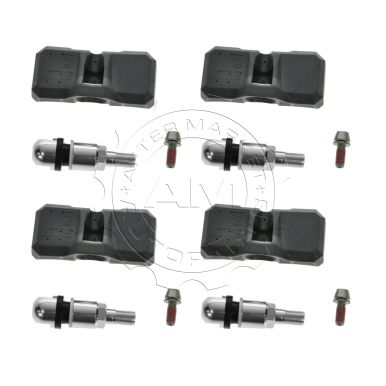
To meet legislative requirements in most markets, every vehicle must be equipped with a TPM system. It is available as an option in other markets.
A drop in tire pressure can cause various damages to the tire. When tire pressure is lost on one or more wheels, the tire pressure indicator alerts the driver. This can also help to avoid tire damage before it happens.
Besides the tire wear and damage, the low tire pressure also affects the vehicle’s stability and driveability.
| No. | Explanation | No. | Explanation |
| 1 | Wheel sensor, front left | 2 | Wheel sensor, front right |
| 3 | Wheel sensor, rear right | 4 | Wheel sensor, rear left |
| 5 | Remote control receiver |
The Dynamic Stability Control (DSC) control unit has a built-in tire pressure control feature.
The radio signals from the wheel electronics are received by the remote control receiver. The CAN bus connects the remote control receiver to the Body Domain Controller (BDC). The signals are forwarded to the DSC control unit via the bus connection by the Body Domain Controller (BDC).
The messages sent by the wheel sensors are processed by the DSC control unit. Each of the wheel sensors sends the following information above a speed of about 15 mph:
| No. | Explanation | No. | Explanation |
| 1 | DSC control unit | 2 | Hydraulic unit |
| 3 | Plug connection |
The instrument cluster and head unit receive data from the DSC control unit.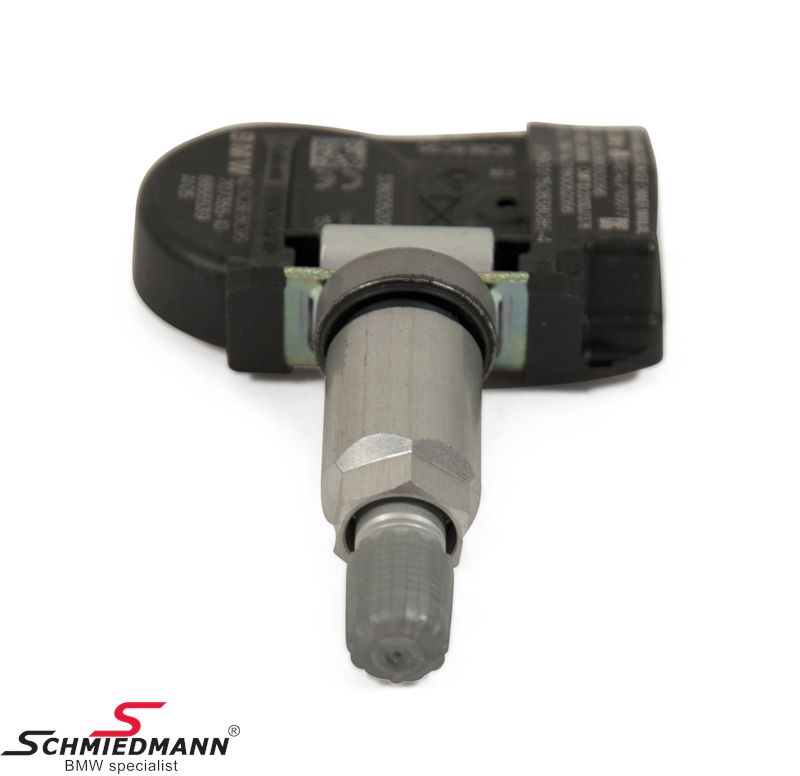
A warning and indicator light on the instrument cluster shows a tire pressure drop, and a Check Control message is displayed.
The iDrive head unit’s central information display can be utilized to get more information about the tire pressure by looking at the vehicle status.
The tire pressure monitoring system must also be initialized using the head unit.
Wheel electronics systems are fitted in the wheel drop center of all wheels. The filling valves are bolted to the wheel electronics systems (made of metal). All-wheel electronics systems are made up of the same components. The acceptable working temperature ranges from -40°C to +125°C. The actual temperature in the tire is monitored by the wheel electronics. When the temperature rises over roughly 115°C, the tire pressure management goes into a limited-function mode. The hardware is turned off in specific instances.
An acceleration sensor is built into each wheel electronics unit.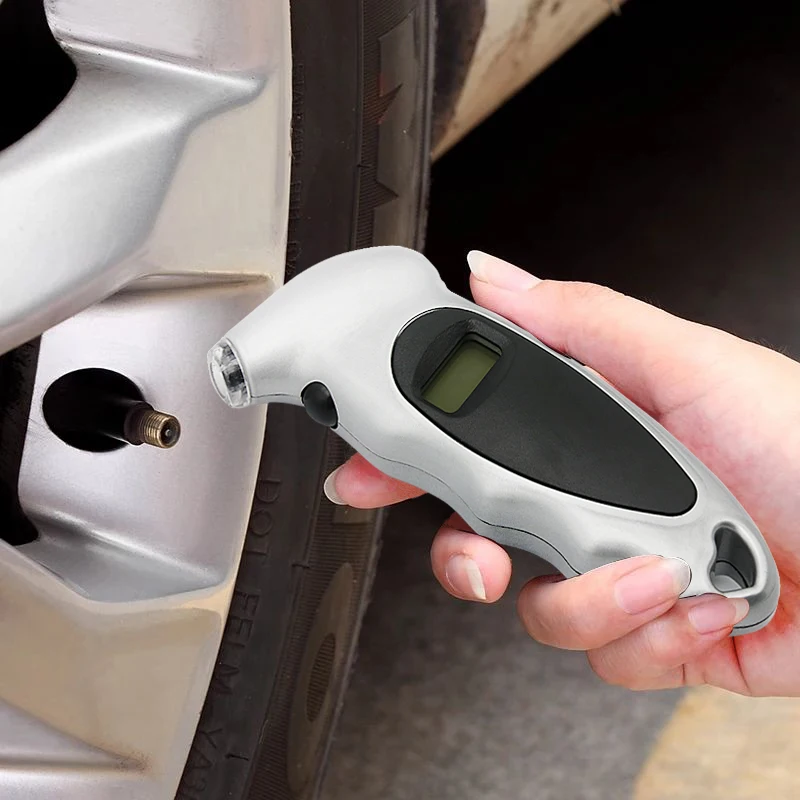 Whether the wheel is stationary or rotating is detected by the acceleration sensor.
Whether the wheel is stationary or rotating is detected by the acceleration sensor.
The remote receiver does not provide messages to the Dynamic Stability Control when the wheels are stationary (DSC). The wheel electronics are in a state of inactivity. The battery life of the wheel electronics is extended as a result of this.
The wheel electronics go into “standby” mode once the vehicle reaches 30 km/h (18 mph). The wheel electronics begin transmitting in predetermined cycles.
At regular intervals, the wheel electronics measure the tire inflation pressure and temperature. In periodic cycles, the remote receiver transfers this monitored data from the tire to the DSC.
| No. | Explanation | No. | Explanation |
| 1 | Wheel sensor (electronics) | 2 | Transmission frequency |
| 3 | Pressure sensor | 4 | Valve |
A lithium-ion battery provides power to the wheel sensor. The service life is expected to be about ten years. The remaining service life is presented with a month-accurate prediction.
The service life is expected to be about ten years. The remaining service life is presented with a month-accurate prediction.
The assignment of the wheels in the DSC may necessitate a drive of up to 9 minutes.
The wheel electronics are in “learning” mode during the wheel assignment identification procedure.
Centrifugal force is created as a wheel rotates. At a speed of about 15 mph, the impact sensor begins to register this centrifugal force. The impact sensor uses the acceleration of the earth to determine the position of the wheel electronics.
The “learning” mode requires this position (12 o’clock).
The DSC control unit reassigns the positions of the four wheels in learning mode. Adjusting the position assignment between the wheel electronics and the wheel speed sensors accomplishes this.
The wheel sensors’ messages are sent to the remote control receiver through a high-frequency transmission channel (433 MHz). Every 15-30 seconds, communication to the remote control receiver is sent. The Body Domain Controller receives the current status of the messages via the LIN bus (BDC/FEM). The messages are sent from the BDC or FEM control unit to the DSC control unit via the FlexRay bus. The messages are evaluated by the DSC control unit.
Every 15-30 seconds, communication to the remote control receiver is sent. The Body Domain Controller receives the current status of the messages via the LIN bus (BDC/FEM). The messages are sent from the BDC or FEM control unit to the DSC control unit via the FlexRay bus. The messages are evaluated by the DSC control unit.
| No. | Explanation | No. | Explanation |
| 1 | Remote control receiver | 2 | three‐pin plug connection |
Examine the aluminum screw valve to see if wheel TPMS valves have been installed. The vehicles without TPMS have black rubber valves. The fault memory entry can be used to determine whether the correct wheel electronics were installed or whether there was a mixed installation by various manufacturers. The RDC tool can be used to find out who made the wheel electronics.
Following a tire or wheel change, a 5-minute stationary period is required before the tire pressure monitor can be initialized.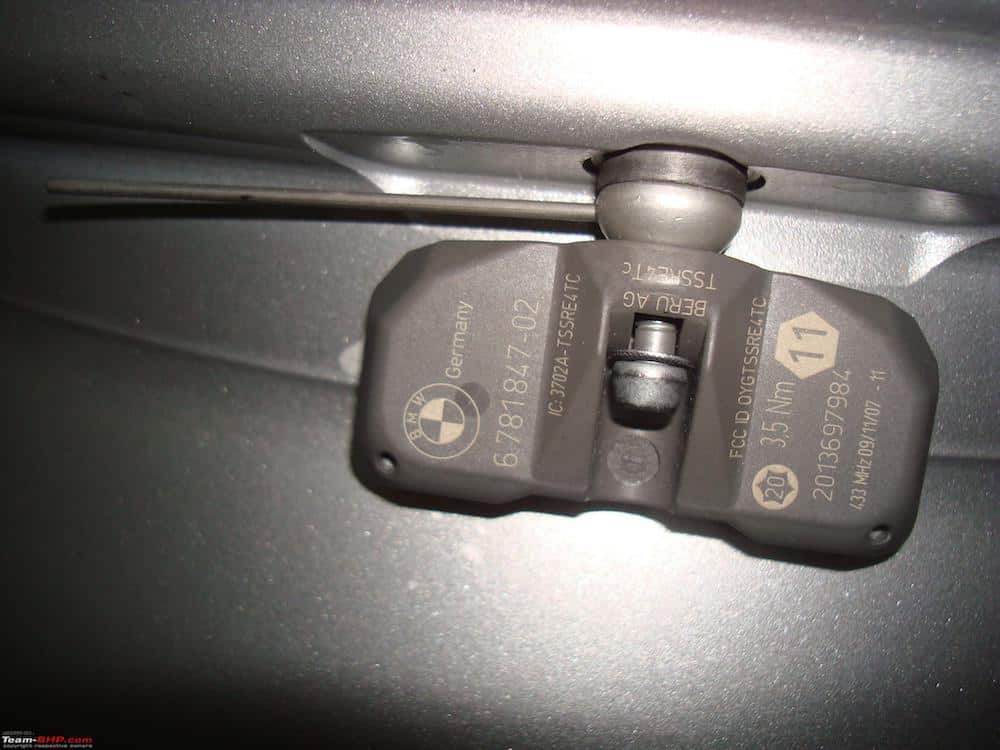
In the following situations, the tire pressure control must be initialized:
The existing inflation pressure is conveyed as a specification for the nominal pressure during the initialization procedure.
On cold tyres, the driver is individually responsible for setting the proper inflation pressures according to the operating instructions. According to the model series, the initialization procedure can be managed from several locations. The iDrive
To find the recommended tire pressure check the sticker on the inside edge of the driver’s door.
.
If you want to disable the TPMS system in your BMW, the simple VO coding will be enough.
Just remove 2VB from the vehicle order and code DSC, ICM, KOMBI, and iDrive Head Unit module.
Now you’ll still have the FTM (Flat Tire Monitor) system active.
Note!
Don’t forget to unplug the TPMS control unit! It makes no difference whether you’ll unplug it before or after the coding.
It is impossible to write a TPMS retrofit guide that will fit all BMW models, so while you can follow this guide you also need to acquire the correct parts for your BMW model. The parts are different for various markets, vehicle production dates, and of course the models.
The most important thing is that the TPMS (RDC) control unit matches the wheel sensors (it depends on the production date and different transmitting frequencies used across markets).
This is the example of a 2014 BMW 3-Series F30 and it is very similar across all model ranges.
Parts required:
To find the correct part, you should use the BMW parts catalog, like ETK or RealOEM.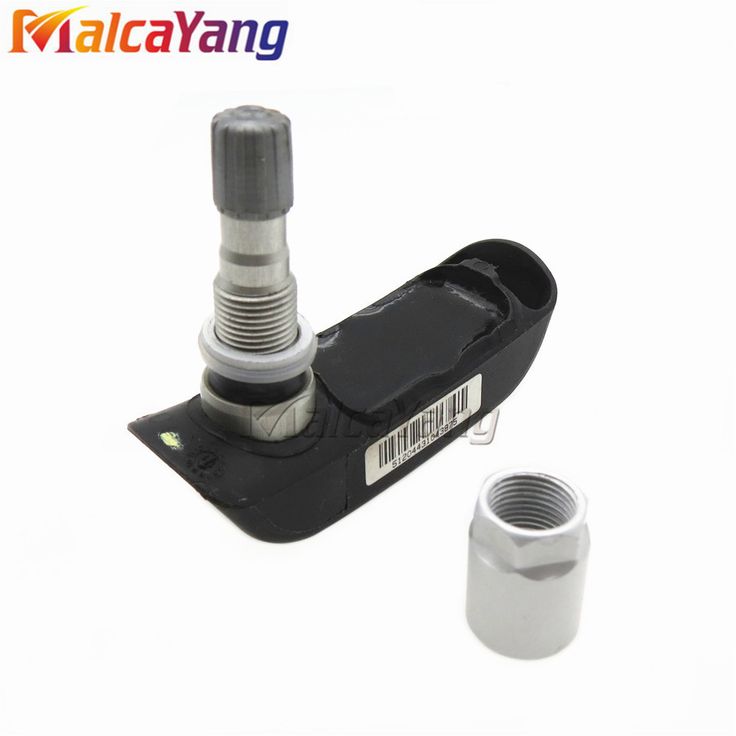
The power supply (pin 2) goes to the rear fuse holder. It doesn’t have to be an F132 fuse, but it has to be a 30B terminal.
The CAN bus (Pins 1&3) can be connected anywhere on the K_CAN bus (K=Karoserie/Body). In the case of the F30, the K_CAN goes to/from the FEM module. If the car is already equipped with a trailer hitch, you’ll find the K_CAN wires at the back, so you don’t need to take wires all the way to the front.
If you are new to the CAN bus network, keep in mind that the wires have to be twisted. The wires are twisted because the signals conveyed on the wires are based on measurements taken on both wires; as a result, when the wires are twisted together, they are both subject to the same interference, reducing the probability of a discrepancy.
To twist the wires, I always use this method:
The K_CAN bus network heavily depends on the vehicle equipment.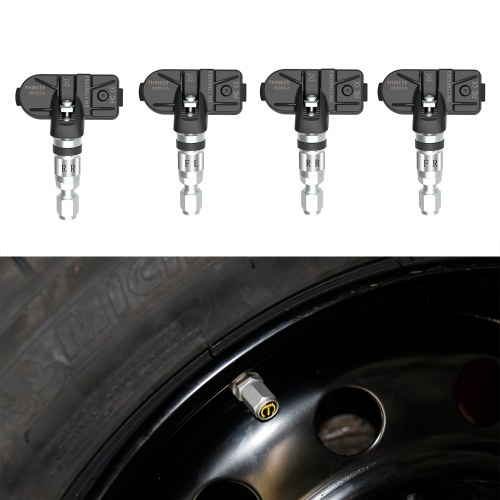 To make your retrofit easier, you should first check what is the easiest way to connect to a K_CAN network.
To make your retrofit easier, you should first check what is the easiest way to connect to a K_CAN network.
TRSVC control unit
This is the control module for the rear-view/surround-view camera and it is located in the trunk for F1x and F2x, and in the driver footwell for the F3x models. So, for the 1, 2, and 5 Series you can go with this one. Just find the orange/green and green wire and connect to them.
AHM control unit
This is the tow hitch module, also located in the trunk. This will be the easiest one.
IHKA (Climate Control), CON (iDrive Controller), SMFA (Seat Module Driver), or SMBF (Seat Module Passenger)
These modules are not so convenient, but here we could choose the passenger seat module. On the other hand, when you are already there, just go to the FEM module for a cleaner installation.
The ground wire (Pin 4) can be connected to the ground connection point in the trunk (left).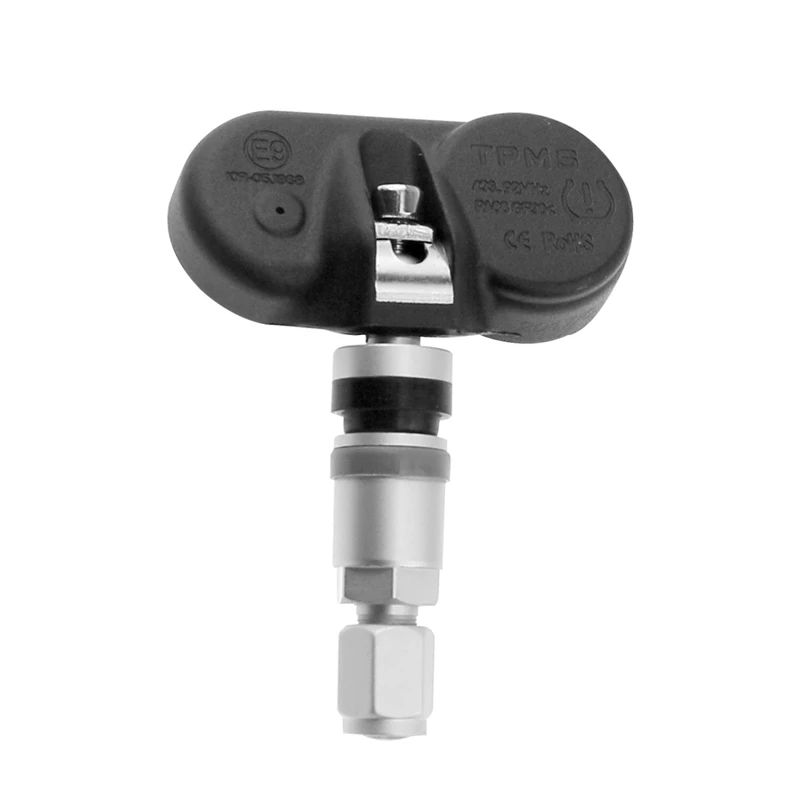
It can’t get simpler: just add 2VB to the VO and code FEM, ICM, HU_NBT/CIC/Champ…, KOMBI, and DSC.
If you have any more questions, write below in the comments and I’ll try to do my best.
You can find the information you are looking for in the navigation menu. Any questions can be asked in the online chat.
Diagnostic equipment:
Universal
Autressers
and adapters
adapters based on
ELM327
Multimaric
Auto Square
Multmaric
adapters
Marychiki
Diagnostic
adapters
for professional use:
dealerships
Diagnostic complexes
Multimaric
Autoskaners
Diagnostic equipment
for motorcycles
Diagnostic equipment
Equipment
for construction equipment
Diagnostic
Equipment for
Water TS
Measuring Equipment:
Automobile
Endoscopes
Tempens
9000Digital tachometers
Lux meters
Pressure gauges
Exhaust gas analysis
Additional equipment:
Programmers 9000
Diagnostics
GPS Trackers
Adapters
Emulators
AdBlue
Diagnostic
registrars
Motors
Stroboscopes
Equipment for various systems:
Equipment for
Working with Airbag/SRS
Equipment system
Equipment for
Fuel system
Equipment for
Parking brake system
for
service interval settings
Equipment for
TPMS
Equipment for
Savior filter
Equipment for
Immobilizer system
Equipment for
Pneumatic suspension system
GSM devices
control
and alarm
Garage Equipment:
Lifts
Similarly
Equipment for AMP
Equipment
diesel engines
Equipment for
refueling of air conditioners
Equipment for
cleaning of air conditioners
Equipment for
Adjusting the FAR
Smoke generators
Equipment for
Cutting Cooling
liquid
Launch and charger for AKB
racks, presses, cranes
Ultrasound baths 9000
Work area lighting
Hand tools
Equipment manufacturers
|
|
|
|
Selection of equipment by vehicle brand
Cars
|
|
|
|
|
Trucks and buses
|
|
| Renault
|
|
Motorcycles
|
|
|
|
|